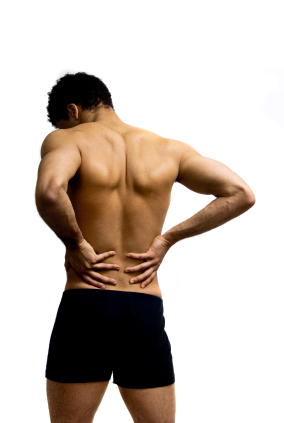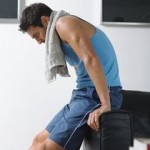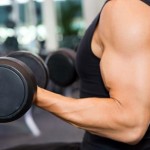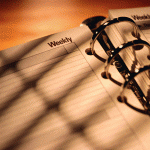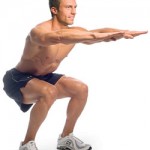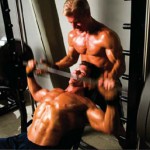Training with intensity is not easy, and although you’re doing it to benefit how your body feels and looks, there is an important component (or rather, an after-effect) that many people have to deal with. That after-effect is known as delayed onset muscle soreness (DOMS), or in other words, being very sore the following day in the places you worked the day before. The reason I mentioned that many people have to deal with this after-effect as opposed to all, is simply due to the fact that everybody is unique and their body has a different way of handling the stress they throw at it in the gym. Now, keep in mind I’m referring to long-term delayed onset muscle soreness, soreness after workouts that persists week to week and doesn’t really go away. Everybody will experience DOMS when they first enter the gym, but not everyone will continue to feel it. Often times some people’s bodies get used to the new “amount” of stress (regardless of varying levels of intensity) and they don’t have to deal with much soreness (if any at all) the following day after training. Like mentioned, everybody is different.
With that as a preface, there is an ongoing question as to whether soreness after workouts is a necessary component of growing. Without dancing around the answer and trying to bore you, the answer is no. Delayed onset muscle soreness is not a requirement of fueling growth (but diet is! - Maintenance Calories). There is actually a very simple way of understanding this subject. There are multiple factors that contribute to whether a person will experience soreness the next day, and these may include:
1) How intense the training was
2) How unique the training was (how much it differentiates from regular, expected training that the body is used to)
3) Diet
4) Sleep/Recovery
Couple any of these with an individual’s unique body, and you can have a plethora of different experiences post-training that range from not feeling any soreness, to feeling light-moderate-heavy soreness. To further dive into this, consider some examples:
1) Person A – trains with intensity and reaches muscle fatigue with each workout, but does not diet correctly and/or get good sleep due to his/her schedule in order to aid recovery. This is a very common scenario, and it’s worth examining it because it illustrates a very important point about delayed onset muscle soreness. It can very well occur, whilst not aiding in growth in any way. Even though the individual is training well, they are lacking in the other necessary areas and not giving their body the necessary fuel to grow. Whether that fuel refer to recovery or diet is irrelevant since any one of those can contribute to delayed onset muscle soreness outside of actual training intensity.
2) Person B – trains with the same intensity as the person above, with proper diet and good sleep for recovery. They feel very little or no DOMS. Are they still growing? Yes. Whether their body is responsible for the fast recovery or all these other factors that they are taking care of correctly is irrelevant, as all the bases are covered and they are able to grow without soreness after workouts. Now keep in mind, the reason I say the body can be responsible for fast recovery is because of the earlier mentioned point that everybody is different. There are simply some people whose bodies are more resistant to lactic acid build up (which causes DOMS) than others. They may even be failing in some factors such as sleep or diet, and won’t get DOMS. I’m just illustrating in this example a person with practically the opposite extreme of Person A (since the only similarity is training intensity, and if you train weakly you’re not stressing your body enough for it to possibly get DOMS anyway). Of course, this brings up another point. A person’s body may be very weak in terms of recovery, and even if they do train weakly and eat/sleep correctly they could get delayed onset muscle soreness. The possibilities are endless, really.
Nonetheless, DOMS can certainly be a very good indicator of a person pushing their body hard towards growth. The problem lies in the reliance on DOMS as an indicator of growth, because as you can see from the examples above this can be quite misleading. As another example that can help illustrate my point, imagine someone taking a 5lb dumbbell and doing a 100 reps of a particular exercise. The sheer volume with which they are working with can produce DOMS, however, the benefit of doing this many reps is probably nonexistent (probably, because it can technically work for growth as explained in the linked article). The point I’m trying to make, for this article at least, is that doing that many reps can certainly produce soreness but not help with growth in any way as the weight is too light and doesn’t push you past your limits.
Counting on delayed onset muscle soreness, therefore, is not indicative of growth under many circumstances. It can occur due to a variety of factors, many of which could stem from a person dropping the ball in other categories outside of their gym workouts. Make sure you have your eating game on lock, you have plenty of time to sleep and recover, and you train hard in the gym. If those factors are taken care of, so will your results (whether DOMS are included or not). Don’t make delayed onset muscle soreness your guide in your journey for results with your body, understand it is just an after-effect. As an ending note, for those of you who do train hard, eat well, and recover…if you are not feeling DOMS and are convinced they are necessary to quell your mind about having a great workout session, simply focus on point #2 earlier in the article. Switch up your routine, it’ll have a similar effect to someone who is first stepping in the gym, the body will not be used to it and most likely produce strong DOMS. To keep with the spirit of the article, that advice in and of itself proves its main point. DOMS can be controlled and manipulated, if necessary. That should tell you enough about relying on it as a guide for results. Good luck!
Incoming search terms:
- no doms after workout
- how to get rid of delayed onset muscle soreness
- Delayed onset muscle soreness is due to
- sore after gym

